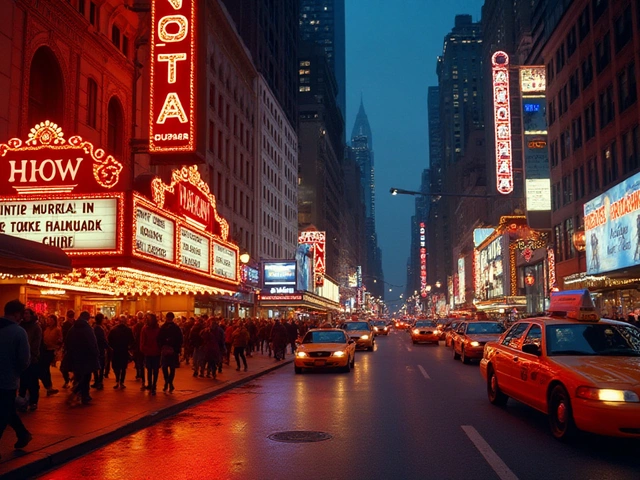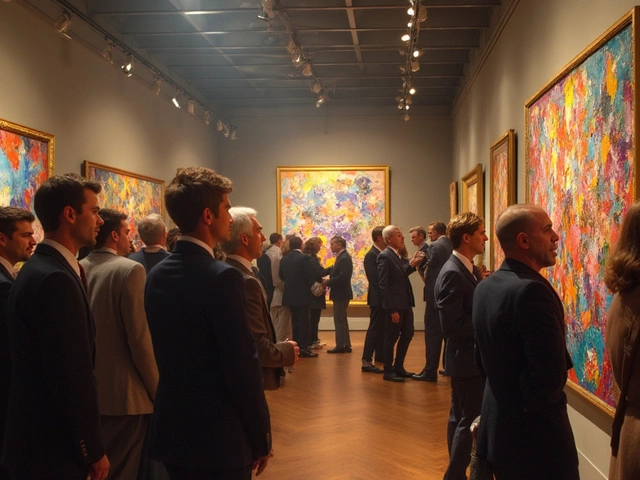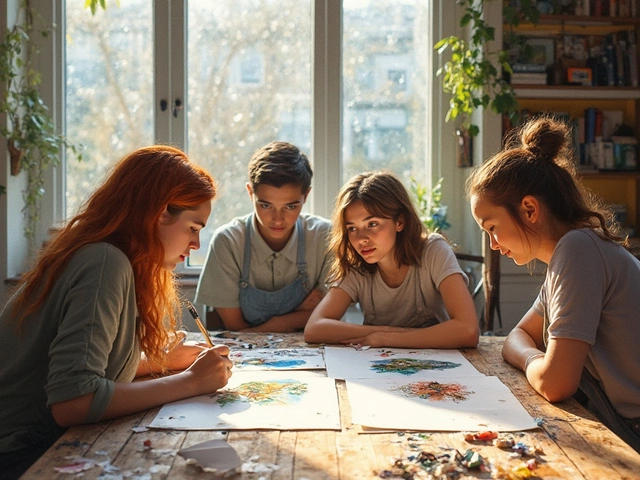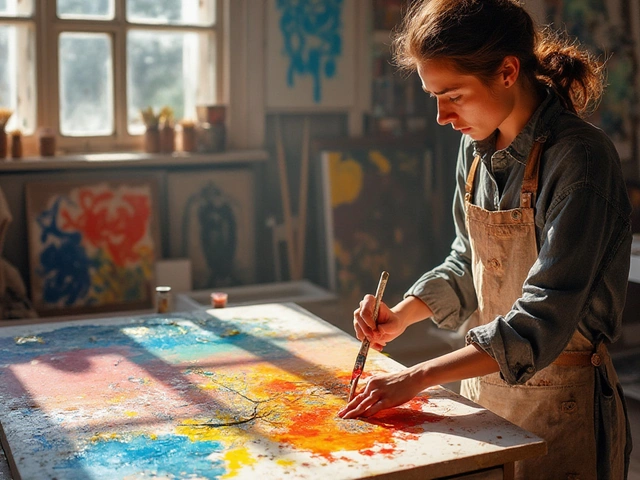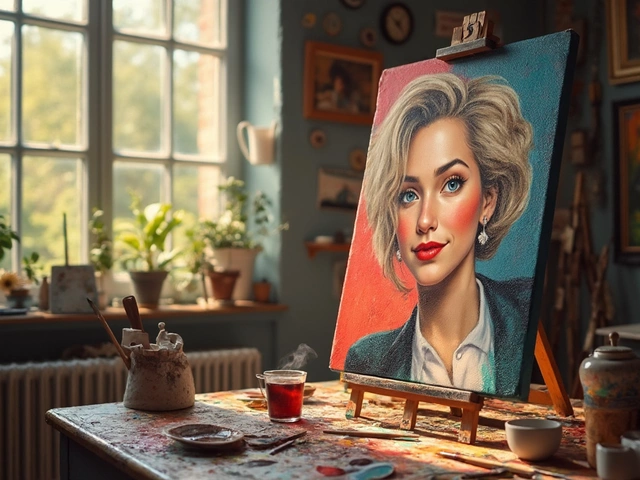So, you've set up your easel and you've got all your colors ready. You're staring at that blank canvas, itching to create a landscape that's more than just trees and skies. But how can you make it stand out? Well, here's a little secret: it's not just about painting more, it's about painting smart.
Think about your focal point. What's the one thing you want people to notice first? Once you pinpoint that, the surrounding elements in your painting support it, making the main subject shine. But don't stop there; explore how light and shadow play off each other to add depth. It’s like giving your painting that third dimension, making viewers linger a bit longer.
Rethink Focal Points
Alright, let's chat about focal points in your landscape painting. This is where your painting grabs attention first, like a scene-stealer in a movie. Missing a distinct focal point can make your artwork feel a bit lost, like a story without a main character. So, you want to have something in your artwork that commands the eye's attention.
So, how do you pick the right focal point? Start by thinking about what sparks the most interest in your scene. Is it the color contrast of a sunset against the horizon or a lone tree standing strong amidst a storm? Use your artistic intuition to guide you, but remember, once you pick your focal point, it's time to make sure it pops.
One cool trick is to use the Rule of Thirds. Imagine your canvas is split into a grid with two vertical and two horizontal lines. Placing your focal point where these lines intersect can lead to a more balanced and engaging composition.
Don't forget about details and techniques that highlight this focal point. It can be brighter colors in a sea of muted tones, bold outlines, or a play of light that directs attention right where you want it.
Changing up textures can also make a difference. Use smoother brushstrokes in the focal area while keeping surrounding areas more abstract or with different techniques. This contrast draws attention naturally.
In a nutshell, refining your focal point boils down to deciding what part of your painting tells the story best and then using these tips to make sure it gets noticed. It’s like setting the stage for a grand entrance, ensuring viewers can’t help but get drawn into whatever tale your landscape quietly narrates.
Play with Light and Shadow
The magic of a landscape painting often lies in how you can manipulate light and shadow. It adds drama, depth, and authenticity to your work. Using light effectively means understanding where it’s coming from in your scene. Is it the morning sun casting those long, stretchy shadows, or is it the harsh midday light washing out details? Knowing this can totally transform how your landscape feels.
Start by identifying your light source. This could be the sun, moon, or even an artificial light. Once you know what it is, think of how it affects everything else in your painting. One simple trick is the contrast rule—areas closer to the light source are obviously brighter, and those farther away are darkened by shadow. It's the interplay of these two elements that adds dimension.
Want to give your painting that real 'wow' factor? Try exaggerating the light and shadow. It might initially feel a bit over the top, but often, that's where the intrigue lies. Remember, you're not just painting what you see; you're painting what you want your audience to feel.
Don’t just rely on white and black for highlights and shadows. Sometimes, using complementary colors can enhance the drama. A shaded area can have hints of deep purples or blues, while a sunlit spot might burst with warm yellows or oranges.
Take Van Gogh, for instance. Go through his works and you’ll notice how he plays with light and shadow, not just for realism but to stir emotions. His pieces are vibrant because he didn't shy away from bold contrasts, using strokes of dark and light to guide the viewer's eye.
- Highlight intensity: Warm colors for sunlight, cool for shadows.
- Directional shading: Use strokes to follow light's path.
- Layering contrasts: Multiple layers for rich texture.
Next time you stand in front of your canvas, take a moment to consider how light and shadow can change your landscape painting. It might be the different perspective you need to give your art that compelling edge.
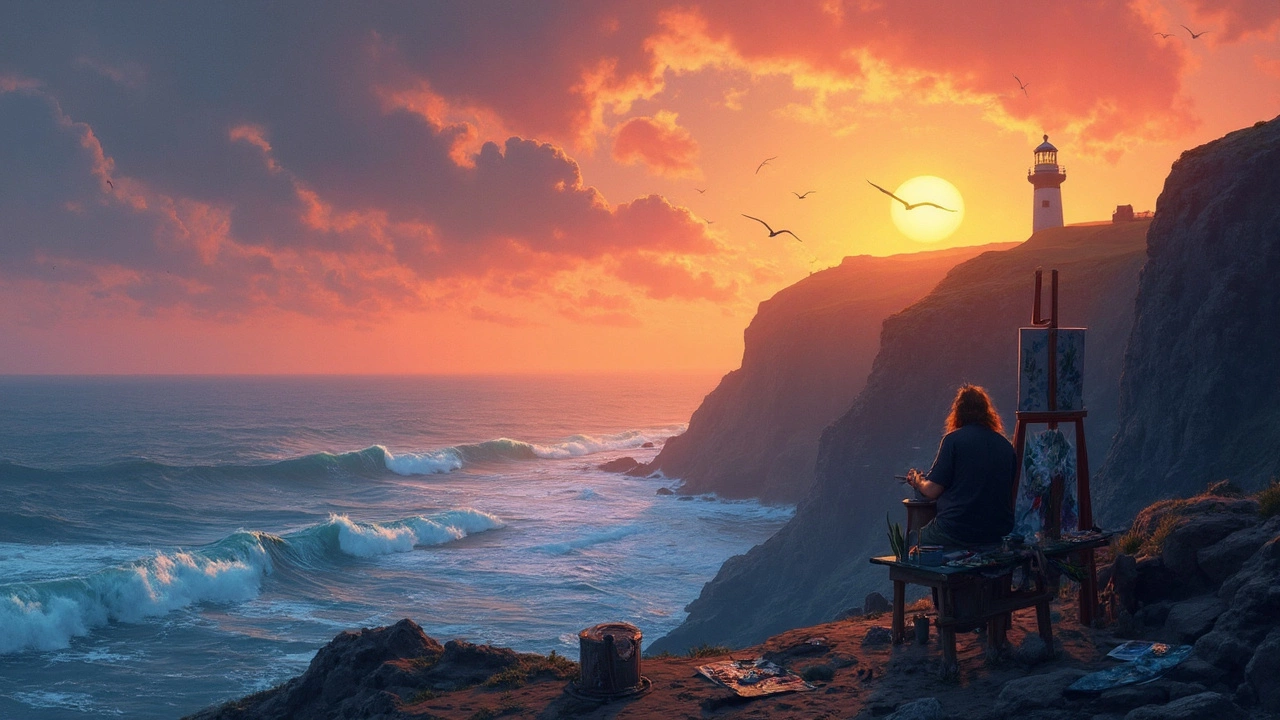
Incorporate Unusual Elements
Got your basic landscape laid out but feeling like something's missing? Time to shake it up by adding some unusual elements. This could be what sets your painting apart, giving it that extra flair and uniqueness. When viewers see a landscape, they expect the usual—trees, maybe a river, mountains in the background. Surprise them by throwing in something unexpected.
Consider adding man-made structures into natural scenes, like a lone antique car rusting in a field, or a whimsical street lamp standing in the forest. These elements can create an interesting contrast and a story within your painting that will capture interest. Another idea is to include wildlife that's perhaps a bit out of place, like a parrot in an oak tree, sparking curiosity and imagination.
If you want to keep things subtle, you could play with scale. Maybe a giant flower in the foreground or tiny, detailed animals peeking from behind boulders. These can be sneaky little details that invite viewers to take a closer look, unraveling layers they might miss at first glance.
Also, don’t forget about incorporating unexpected weather effects. A sudden burst of heavy rain or a dramatic lightning bolt can bring a lively sense of motion and drama to an otherwise serene scene.
One clever tactic is juxtaposition: place things next to each other that don’t usually belong together. Like painting a desert scene with a snowy backdrop. The key is to ensure these unusual elements don’t feel forced—blend them organically to maintain a balance between realism and creativity.
Let your imagination loose but keep it grounded with a sense of balance. It's all about making your landscape painting an adventure for the eyes, something that’s not just seen, but experienced.
Experiment with Colors
Thinking of jazzing up your landscape painting? Playing with colors is your go-to move. But I’m not just talking about picking pretty shades. There's a deeper dive. Consider warm and cool tones. They’re the dynamic duo of the painting world. Warm colors like reds, oranges, and yellows can make objects seem closer to the viewer. Meanwhile, cool colors like blues and greens tend to recede, creating the illusion of distance.
Another trick? Use complementary colors to make things pop. Place colors opposite each other on the color wheel, like blue and orange, side by side, and see how they vibrate with energy. This contrast grabs attention and makes scenes look more vibrant and alive.
And there’s more. Think about gradation. Smooth transitions from dark to light or from one color to another can add interest and depth. This gradual change captivates the eyes, guiding them through the painting.
Let's not forget about saturation. Bold, fully saturated colors can highlight key parts of your painting. Meanwhile, desaturated colors—those that are more muted—can pull back. It's all about balance, making certain areas stand out without overwhelming the entire piece.
If you're into numbers, maybe even track your color usage. Here's a simple guide to help you mix things up:
- Main Cools: Use around 60% of your canvas for these to establish a calming base.
- Warm Highlights: Aim for 30% to draw attention where you need it.
- Accent Colors: Top it off with 10% to add spice and excitement.
So grab that brush, mix those colors, and watch your artwork transform into something extraordinary. It's not just about landscape—it’s about turning a piece of the Earth into your masterpiece.


